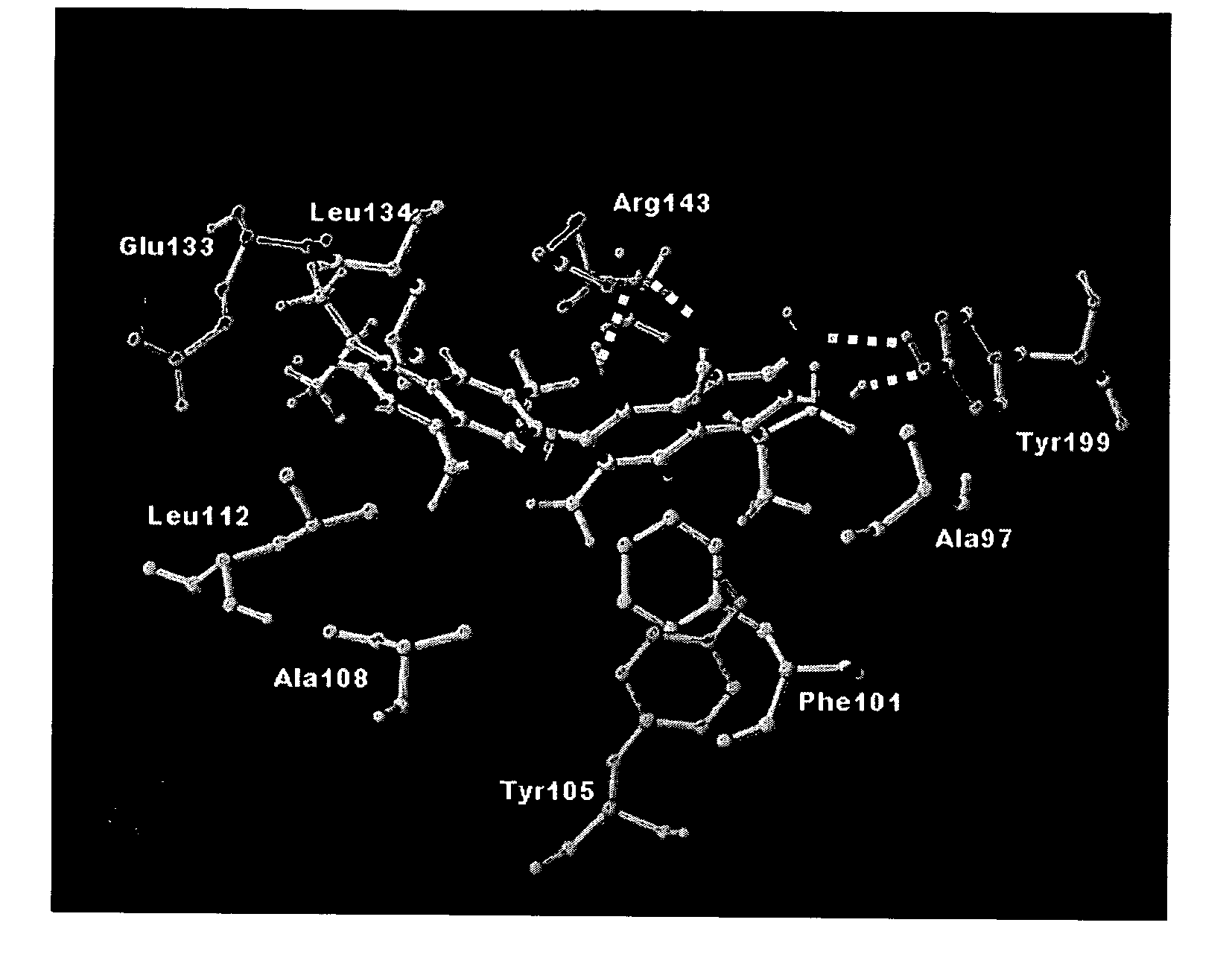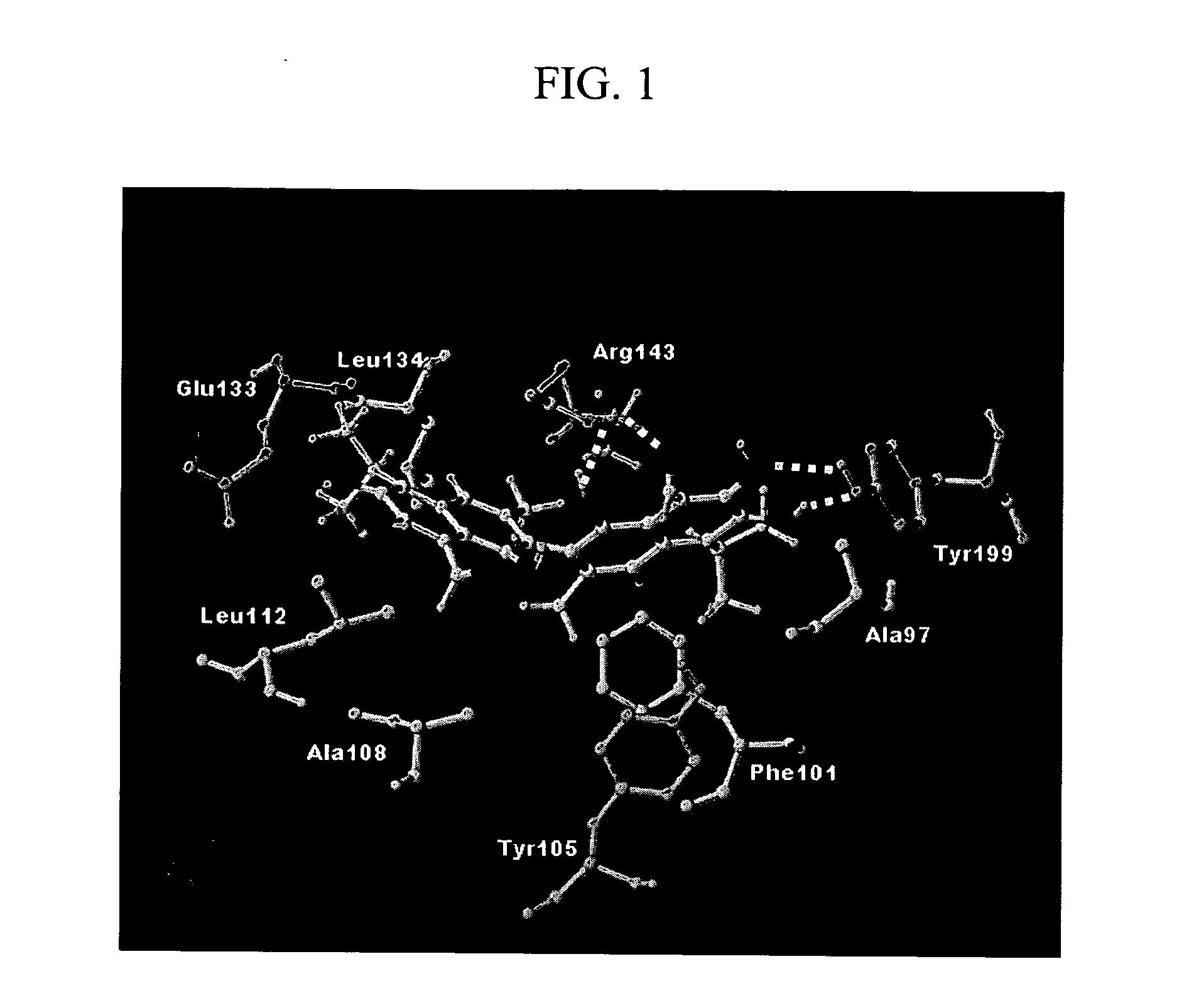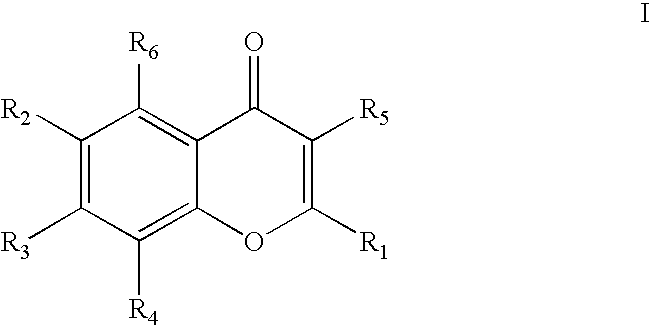Chromen-4-one inhibitors of anti-apoptotic Bcl-2 family members and the uses thereof
- Summary
- Abstract
- Description
- Claims
- Application Information
AI Technical Summary
Benefits of technology
Problems solved by technology
Method used
Image
Examples
example 1
1-(6-Hydroxy-2,3,4-trimethoxy-phenyl)-2-methyl-propan-1-one
[0103]
[0104] To a solution of 3,4,5-trimethoxyphenol (9.21 g, 50 mmol) in 150 mL 2,2-dichloroethane, boron trifluoride diethyl etherate (28.5 mL, 220 mmol) and isobutyryl chloride (5.9 mL, 55 mmol) were added. The resulting mixture was refluxed for 12 hours, and the solvent was removed in vacuo. To the resulting residue, 80 mL 3 M HCl was added under ice bath and the mixture was stirred for 1 hour at room temperature, then extracted with ethyl acetate, dried over Na2SO4, purified by silica gel column chromatography (hexane:ethyl acetate=6:1), and product was obtained. Yield: 80%.
[0105]1H NMR (CDCl3, 300 MHz), δ 13.45 (s, 1H); 6.26 (s, 1H); 4.01 (s, 3H); 3.94 (s, 3H); 3.87 (s, 3H); 3.80˜3.70 (m, 1H); 1.21 (d, J=6.76 Hz, 6H); 13C NMR (CDCl3, 75 MHz), δ 162.00; 159.64; 154.88; 134.63; 107.35; 96.20; 61.54; 60.94; 56.01; 39.03; 19.46.
example 2
2-Isobutyl-3,4,5-trimethoxy-phenol
[0106]
[0107] 1-(6-Hydroxy-2,3,4-trimethoxy-phenyl)-2-methyl-propan-1-one (5.1 g, 20 mmol) was dissolved in 30 mL trifluoride acetic acid and 3 mL triethylsilane was added at room temperature. The resulting solution was stirred overnight, and the solvent was removed in vacuo. The residue was purified by silica gel column chromatography (hexane:ethyl acetate=4:1), and product was obtained. Yield: >95%.
[0108]1H NMR (CDCl3, 300 MHz), δ 6.27 (s, 1H); 3.90 (s, 3H); 3.85 (s, 3H); 3.82 (s, 3H); 2.43 (d, J=7.35 Hz, 2H); 1.91˜1.80 (m, 1H); 0.89 (d, J=6.63 Hz, 6H).
example 3
1-(2-Hydroxy-3-isobutyl-4,5,6-trimethoxy-phenyl)-ethanone
[0109]
[0110] To a solution of the compound of Example 2 (4.86 g, 20 mmol) in 80 mL 2,2-dichloroethane, boron trifluoride diethyl etherate (14.3 mL, 110 mmol) and acetyl chloride (1.75 mL, 22 mmol) were added. The resulting mixture was refluxed for 12 hours, and the solvent was removed in vacuo. To the resulting residue, 50 mL 3 M HCl was added under ice bath and the mixture was stirred for 1 hour at room temperature, then extracted with ethyl acetate, dried over Na2SO4, purified by silica gel column chromatography (hexane:ethyl acetate=8:1), and compound were obtained. Yield: 65%.
[0111]1H NMR (CDCl3, 300 MHz), δ 13.28 (s, 1H); 3.99 (s, 3H); 3.96 (s, 3H); 3.87 (s, 3H); 2.69 (s, 3H); 2.49 (d, J=7.27 Hz, 2H); 1.97˜1.88 (m, 1H); 0.92 (d, J=6.65 Hz, 6H); 13C NMR (CDCl3, 75 MHz), δ 204.05; 158.99; 153.84; 138.04; 118.47; 110.46; 61.00; 60.82; 60.64; 32.25; 31.99; 28.20; 22.62.
PUM
| Property | Measurement | Unit |
|---|---|---|
| Molar density | aaaaa | aaaaa |
| Molar density | aaaaa | aaaaa |
| Molar density | aaaaa | aaaaa |
Abstract
Description
Claims
Application Information
 Login to View More
Login to View More - R&D
- Intellectual Property
- Life Sciences
- Materials
- Tech Scout
- Unparalleled Data Quality
- Higher Quality Content
- 60% Fewer Hallucinations
Browse by: Latest US Patents, China's latest patents, Technical Efficacy Thesaurus, Application Domain, Technology Topic, Popular Technical Reports.
© 2025 PatSnap. All rights reserved.Legal|Privacy policy|Modern Slavery Act Transparency Statement|Sitemap|About US| Contact US: help@patsnap.com



